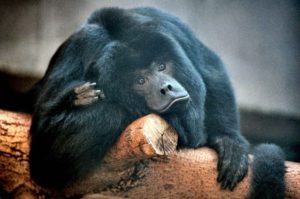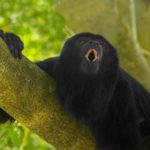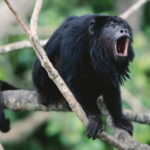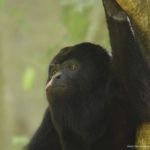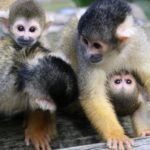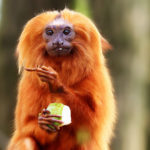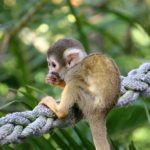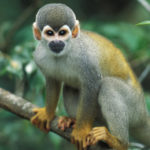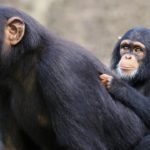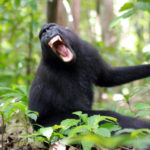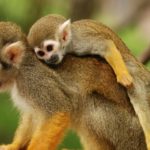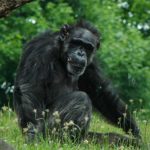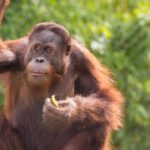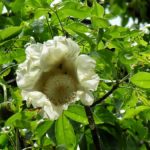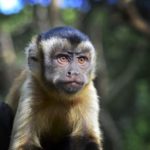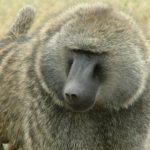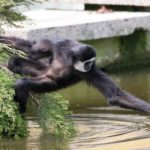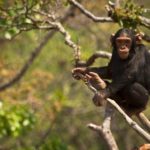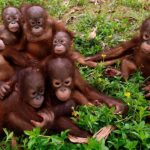Facts about howler monkeys
 Howler monkeys are held by family groups in the crowns of trees. All day the monkeys travel through the branches of trees in search of food, and in the evening the whole pack goes to rest in the midst of low trees. Early in the morning you can hear loud cries, which they denote their site.
Howler monkeys are held by family groups in the crowns of trees. All day the monkeys travel through the branches of trees in search of food, and in the evening the whole pack goes to rest in the midst of low trees. Early in the morning you can hear loud cries, which they denote their site.- The howler monkeys are the largest group of all kinds of South American monkeys.
- To the family of arachnids, myrcine also belongs – the only monkey in the world that conducts an active nightlife.
- The scream of red howler monkey in the jungle can be heard at a distance of 3 kilometers, and in the open area the voice of these animals is spread over a distance of 5 kilometers.
- Red-haired howler monkey eats mainly leaves. His diet also includes nuts, seeds, sweet fruits, some kidneys and flowers. Like other animals that feed exclusively on vegetable food, the organism of red-haired howler monkey is perfectly adapted to such a composition of food. The monkey leaves are grinded by a dense row of primitive teeth. To quickly digest a large number of solid fibers, its digestive system is enlarged and includes special bacteria, the presence of which promotes rapid digestion of the eaten.
- The howler monkey eagerly eats delicate nutrient-rich leaves. These monkeys are rather slow, so even not very nutritious food provides them with enough energy. The most active are these monkeys in the morning and in the afternoon.
- Under the lower jaw, the throaty bags hang in the red horns, especially well-expressed in males. These are peculiar, bone resonators of sound. Due to the presence of this organ, a camera of the hyoid bone is strongly developed in the howler monkeys. A large throat is covered with thick wool. Red-haired howler monkeys are well known for their unusual “concerts”, which are heard at a distance of 3-5 kilometers, monkeys sit on trees and shout out a variety of sounds, while they look at each other .The howler monkeys can modulate the voice, so the sounds are very different: they remind the grunting of a pig, the roar of a jaguar, with the help of which the members of the group designate the territory and communicate with each other.
